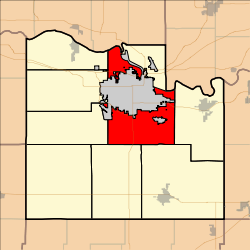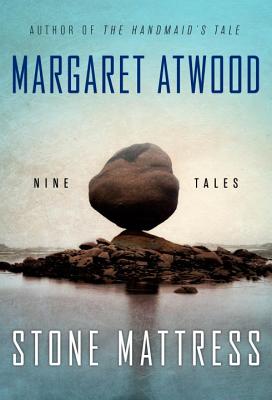"Bleeding Kansas" was a violent stretch of years leading up to the Civil War. Some historians even say the War began in Kansas when conflict over the slavery issue ignited into guerilla warfare.
Prior to the Kansas-Nebraska Act, slavery in the territories was determined by the Missouri Compromise line of latitude: all new states above the 36°30′ N parallel would become free states, and all below, slave states. The new Act effectively repealed the Missouri Compromise by declaring that settlers in the new territories would decide for themselves by voting.
While a democratic solution might seem best, the real outcome was that instigators from both sides flooded into the territory, establishing themselves as settlers in order to vote. Tensions bubbled over into bloody midnight raids by "border ruffians" from the slave state of Missouri and deadly skirmishes between the abolitionist Jayhawkers and the pro-slavery Bushwackers.
The violence lasted from 1855 until a legitimate election in 1861 finally declared Kansas a free state. However, the episode had deepened the divisions within the nation as a whole to the point that the Civil War officially began a few months later. While most Kansans joined the Union Army, guerilla fighting between the old factions continued back home in the new state.
My ancestors were front-and-center to the conflict from the very beginning.
There are very few records for Edward or his wife Rebecca prior to their arrival in Kansas. From census documents, I know that Edward B. Johnston was born in Pennsylvania around 1817, and Rebecca was born in St. Clair County, Illinois, in 1820 or 1823.
They do appear on the 1850 US Census in St. Clair County, IL, with their first child, Delila, who was born around 1844. Their second daughter, Susan, was also born in Illinois in 1853.
It is interesting that the family has origins in Illinois because Stephen A. Douglas, the Democratic Senator from Illinois (and later famous for being the other half of the Lincoln-Douglas Debates), was the author of the Kansas-Nebraska Act. Perhaps, after having intended to settle in Illinois with Rebecca's family, the news and popularity of Douglas' activities in Washington gave Edward the idea to move on to Kansas.
Whatever spurred them westward, they later told the state census collector that they arrived in Kansas in June of 1854, a couple of months ahead of the first group of anti-slavery political settlers sent by the New England Emigrant Aid Company. The Boston-based NEEAC organized and armed groups of radical abolitionists from New England states (including the infamous John Brown) who wanted to settle in Kansas Territory and vote against slavery. In the summer of 1854, NEEAC scouts reported that a few pioneer families were already living along the banks of the Kansas River at the site of their proposed headquarters. One of these families may have been the Johnstons. In October of 1854, the NEEAC founded the town of Lawrence there and it became one of the centers of anti-slavery efforts in the Territory. Other anti-slavery Jayhawker towns were Topeka and Manhattan, while Atchison, Lecompton, and Leavenworth were associated with the pro-slavery Bushwackers.
 |
| The first house built in Lawrence. (Not the Johnstons', as far as I know.) |
 |
| Massachusetts Street in Lawrence, c. 1856. |
A territorial census was conducted in early 1855 that listed Edward B. Johnston in District No. 1, Lawrence Township, Douglas County.
My great-great-great-grandfather, Allen McGee Johnston, was born to Edward and Rebecca on March 20, 1855, in Kansas.
Ten days later on March 30, 1855, Territorial Governor Andrew H. Reeder held an important election to select members for a new House of Representatives. Reportedly, pro-slavery Missouri residents flooded over the border on the day of the election to illegally vote and violently intimidate the local settlers at the polls. Locals rejected the pro-slavery winners as "The Bogus Legislature" and established their own shadow legislature at Topeka, an NEEAC-established Free-State town. A Congressional investigation took place in Washington, DC, in 1856. E. D. Ladd, postmaster of Lawrence and NEEAC settler, testified and presented lists of residents named on the census rolls cross-referenced against the names on the voter poll.
E. B. Johnston is listed as a resident and voter.
Next, Edward shows up on the voter poll list for an election on January 15, 1856, residing in District 1, Franklin Township, which was just to the east of Lawrence City.
His participation in this particular election is possibly more evidence that he was a Free Stater and not pro-slavery. The election on Jan. 15th was held by the rebel Topeka Legislature to ratify their anti-slavery Topeka Constitution and elect abolitionist Charles L. Robinson as Territorial Governor (he would later be Kansas' first State Governor). The election was boycotted by most Bushwackers, and later in that same month, President Franklin Pierce declared the Topeka Legislature revolutionary and treasonous and ordered the arrest of it's members.
There is no record of Edward voting in the election to ratify the pro-slavery Lecompton Constitution, which was drawn up by the official Territorial "Bogus" Legislature. Like in Topeka, the Lecompton election was boycotted by most voters from the opposition.
On the other hand, I also can't find a record of E.B. voting on the anti-slavery Wyandotte Constitution in April of 1860, which finally brought Kansas into the Union as a free state. So it's possible that the records just don't exist, rather than that he was abstaining on principle.
As unlikely as it seems to me, it is always a possibility that the Johnstons were Southern sympathizers. We have no way of knowing how E.B. voted on any of these elections, and I find no specific mention of him in either guerilla camp, probably because he was really just a simple pioneer farmer. I am also not able to find a definitive Civil War service record for him on either side, mostly because there are a lot of Edward Johnstons, but also possibly because many able-bodied Kansans stayed behind to fight with the home-guard militias as the local disputes and raids continued during the War.
While he is still in District 1 in the 1856 voter record, his township changes from Lawrence to Franklin. The town of Franklin was considered to be a pro-slavery settlement. However, the Johnstons are back in Lawrence Township as of the 1859 state census. My guess is that, being farmers, they lived in the country somewhere to the east of the city of Lawrence, and that their apparent movement around Douglas County between 1854 and 1860 only indicates that the township lines were in flux as the population grew and the voting precincts changed.
 |
| Douglas Co. 1857. I so wish I could read the names of the individual property owners plotted on this map, but they are mostly too small. I can't pick out any Johnstons. |
Edward and Rebecca show up next on the 1860 US Federal Census in Wakarusa Township (which surrounded the city of Lawrence), Douglas County, with their children Delila J. (16), Susan (8), Allen M. (5), John (3, b. 1857), and Mary A. (2, b. 1859).
 |
| Douglas County: Wakarusa Township shown in red around the city of Lawrence in grey. (from Wikipedia) |
The next trace of Edward is in the record of his marriage to his second wife, Eliza Ann Hatton.
 |
| Fourth from bottom: "Johnston, E. B., of Douglas co., and Eliza A. Hallier [sic], of Jefferson co., mar. June 16, 1864, by A. G. Sherwood, J. P." |
 |
| Eliza A. Hatton, daughter of Adam and Mary Hatton, age 26 in 1860, born in Kentucky, and (I think it says) a "Tayloress" in Kentucky Township, Jefferson County, near the Oskaloosa post office. |
Sometime between 1860 and 1864, Rebecca must have died, but I can't find any record of her death or a grave site. I also don't find any listing of her name as a victim of the Bleeding Kansas violence, such as Quantrill's Raid on Lawrence in 1863.
She just disappears, and on the 1870 US Federal Census, Edward and Eliza Johnston are listed with their children, Susan (17), Allen M. (15), John (13), Mary A. (11), and William (5, son of Eliza and E.B.). Delila Jane is missing because she had married Thomas Moon in 1864. They are located near the Perry post office, Kentucky Township, Jefferson County, which was immediately to the north of Lawrence across the Kansas River and nearer to Eliza's parents.
 |
| Excerpt from 1870 US Federal Census |
They show up again on the 1875 Kansas State Census in Beaver Township, Cowley Co., near the Winfield post office.
And the last we see of E.B. and Eliza is the 1880 US Federal Census for Hendricks Township, Chautauqua Co., which was right on the southern border between Kansas and the Osage Reservation.
My great-great-great-grandfather, Allen McGee Johnston, had married Margaret Ann "Maggie" Huff in 1876, and they were still living in Cowley Co. in 1880 with their four-year-old daughter Dolly May and their one-year-old son Miles Robert, who was my great-great-grandfather.
Allen McGee would go on to run the Cherokee Strip Land Run of 1893 in Oklahoma Territory. The claim did not have enough water on it to farm so the family ended up moving to Pawhuska in the Osage Reservation one year later.
The rest, as they say, is history.









No comments:
Post a Comment
Note: Only a member of this blog may post a comment.